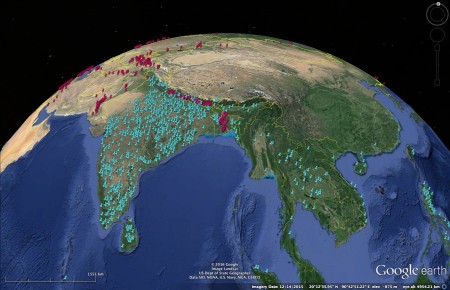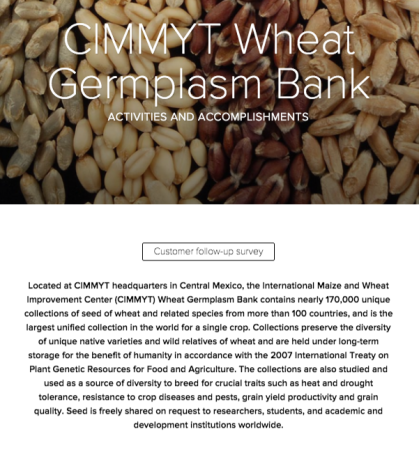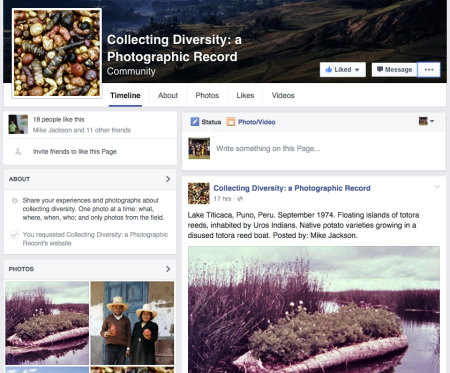- Herbivore damage induces a transgenerational increase of cyanogenesis in wild lima bean (Phaseolus lunatus). Lamarck lives.
- Hybridization of powdery mildew strains gives rise to pathogens on novel agricultural crop species. Hybrid crop gives rise to hybrid pathogen.
- Trait-specific Amaranth Germplasm—Potentialities to Combat Climate Change. From 5,804 accessions to 623 really useful ones.
- Genetic diversity of the two commercial tetraploid cotton species in the Gossypium Diversity Reference Set. 100 SSRs on 2000 accessions yield really confusing results.
- Genetic diversity estimates point to immediate efforts for conserving the endangered Tibetan sheep of India. Only 250 individuals, but still some genetic diversity. But for how long?
- Water Buffalo Genomic Diversity and Post-Domestication Migration Routes. Two domestications, and some unexpected migration routes.
Featured: Grasspea
There’s a lively conversation about grasspea going on.
With a better understanding of the population genetics of grasspea toxin metabolism in combination with adequate supplies of dietary sulfur amino acids, low toxin varieties may become obsolete as a breeding objective, so that breeders can focus more on yield.
Do join in.
Ban or breed?
I’m not sure I was aware of the fact that grasspea (khesari dal, or Lathyrus sativus) was actually banned in parts of India due to its toxicity. Devinder Sharma, a food and trade policy analyst, thinks the ban should not be lifted, International Year of Pulses notwithstanding. Instead, alternative crops should be promoted, such as pigeonpea (arhar, or Cajanus cajan). It’s interesting that there’s no Indian grasspea in the genebanks that Genesys knows about (red), ((But then Genesys doesn’t have the data from the Indian genebank. Yet.)) in stark comparison to pigeonpea (blue).

Lathyrism is a problem in situations where grasspea is pretty much the only thing you have to eat. In former times, when famines were more frequent, the ban probably made sense. But is this still the case? And in any case there’s also lots of research going on low-neurotoxin varieties. A ban is hardly likely to provide much of an incentive for such breeding work.
The CIMMYT wheat genebank gets its message out

Nice summary of last year’s achievements from the CIMMYT wheat genebank. Don’t forget to click on “Appreciate” at the end.
A photographic record of germplasm collecting
Have you ever collected plant genetic resources? If so, please consider sharing some of your photos in a new Facebook group just launched by Mike Jackson, who is stuck at home with a broken leg and time on his hands.
